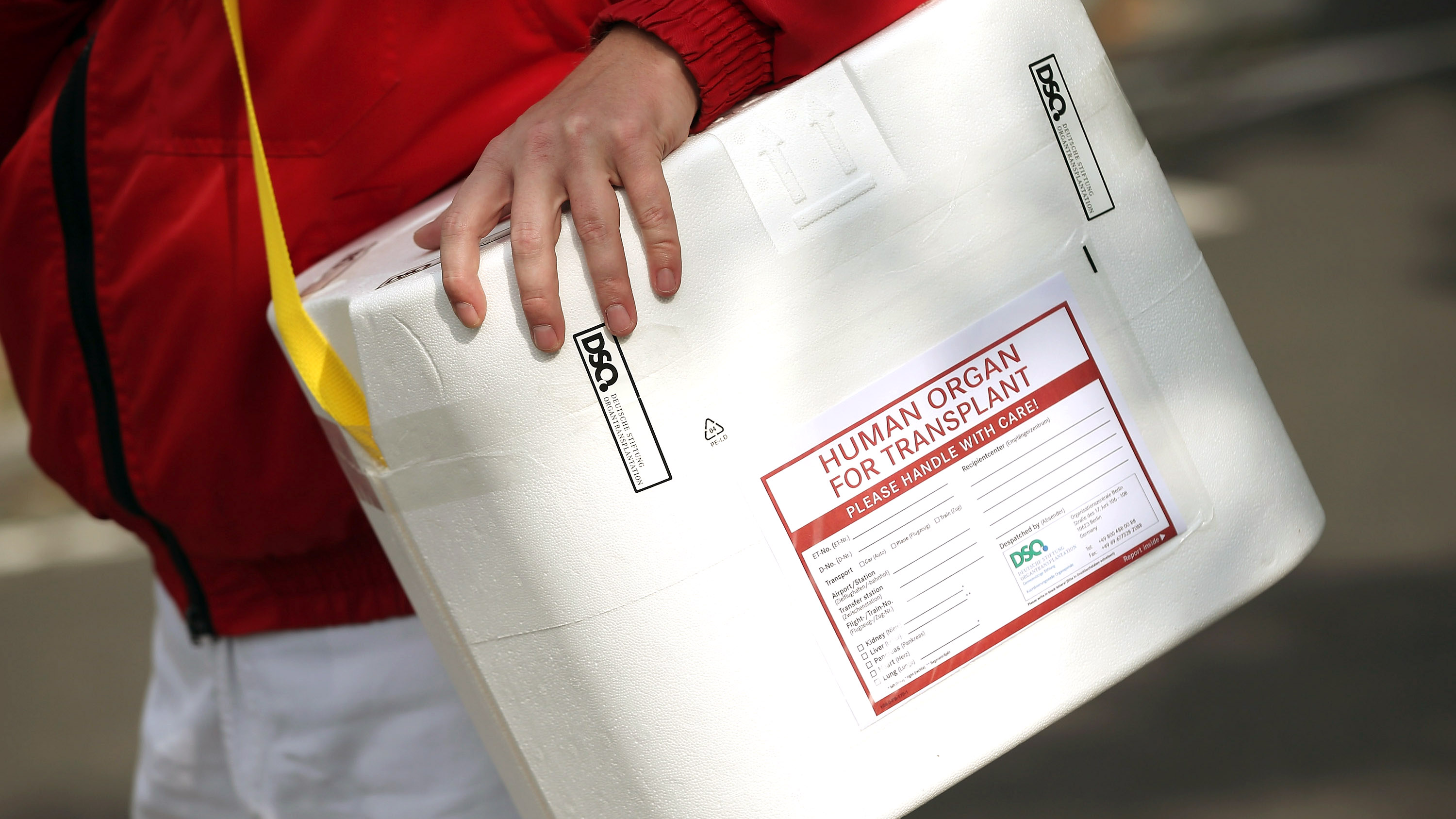A new storage technique could vastly expand the number of livers available for transplant
It allows donor livers to be held for days—significantly longer than the standard now–and even treated if they are damaged.

A patient who received a donated liver that had been stored for three days in a new type of machine that mimics the human body is healthy one year on from surgery, according to a study in Nature Biotechnology. The technology could significantly increase the number of livers suitable for transplant, the authors claim, both by enabling donor livers to be preserved for longer than the current standard and by making it possible to repair organs that are available but too damaged to transplant as is.
A team from University Hospital Zurich, led by Pierre-Alain Clavien, a professor at the Department of Surgery, stored the liver in a machine that re-creates some of the conditions inside the human body: similar levels of pressure, and a temperature of 37 °C. The machine flushed out liquid remaining inside the liver and monitored bile and protein production. It also supplied the liver with antibiotics and an antifungal drug to treat an infection that would ordinarily have meant it couldn’t be used for donation.
The donor liver, which belonged to a 29-year-old woman, had been rejected by all other transplant centers because it had a lesion. Examining the lesion to determine whether it was benign would have taken 24 hours, longer than the current maximum window between donation and transplantation. The technique described in the study bought doctors the time for a biopsy and a successful treatment of the lesion. This method could allow doctors to transplant other livers with similar sorts of issues, potentially saving more lives.
“In the US, 70% of [donor livers] are not used. Whether we can rescue that 70%, I don’t know,” Clavien says. “But it’s exciting to try and rescue the organs that aren’t used, or the ones with problems that could be used. This liver was totally amazing.”
Once removed from their donor, livers are usually stored on ice for a maximum of 12 hours to prevent the cells from being damaged by the cold, which would decrease the chances of a successful transplant. This narrow window makes it difficult to match organs to people needing a donor liver, meaning many patients die before one can be found.
Although further research is required, the team believes the new technique could allow donor livers to be stored safely for up to 12 days before transplantation. If it works, it could also increase the likelihood of treating donor livers with drugs before surgery.
The 62-year-old male recipient had several serious liver conditions, including advanced cirrhosis and severe portal hypertension—an increase in the blood pressure in a major blood vessel that carries blood from the bowel and spleen to the liver.
Once transplanted into his body, the liver began functioning as normal within three days. The patient took immunosuppressants to ward off the risk of infection post-surgery and was discharged from hospital 12 days after the operation. An assessment one year after surgery found no sign of liver damage, injury, or rejection.
Demand for liver transplants is growing, and greater numbers of people are dying from liver disease, but the number of organs available remains low. There are currently over 11,000 people in the US waiting for a liver transplant, according to the Department of Health and Human Services, and waiting times vary hugely across the country.
“I think we can say this stands to revolutionize how we treat liver disorders,” Clavien says. “The proof is the patient—that he’s here, and knowing how he was before.”
Deep Dive
Biotechnology and health
How scientists traced a mysterious covid case back to six toilets
When wastewater surveillance turns into a hunt for a single infected individual, the ethics get tricky.
An AI-driven “factory of drugs” claims to have hit a big milestone
Insilico is part of a wave of companies betting on AI as the "next amazing revolution" in biology
The quest to legitimize longevity medicine
Longevity clinics offer a mix of services that largely cater to the wealthy. Now there’s a push to establish their work as a credible medical field.
There is a new most expensive drug in the world. Price tag: $4.25 million
But will the latest gene therapy suffer the curse of the costliest drug?
Stay connected
Get the latest updates from
MIT Technology Review
Discover special offers, top stories, upcoming events, and more.